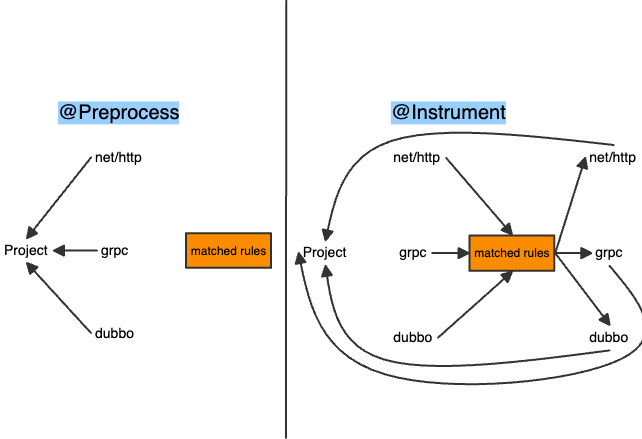Under normal circumstances, the go build command goes through the following main steps to compile a Golang application:
- Source Code Parsing: The Golang compiler first parses the source code files and transforms them into an Abstract Syntax Tree (AST).
- Type Checking: After parsing, type checking ensures that the code adheres to Golang's type system.
- Semantic Analysis: This involves analyzing the semantics of the program, including variable definitions and usages, as well as package imports.
- Compilation Optimization: The syntax tree is converted into an intermediate representation and various optimizations are performed to improve code execution efficiency.
- Code Generation: Machine code for the target platform is generated.
- Linking: Different packages and libraries are linked together to form a single executable file.
When using our automatic instrumentation tool, two additional phases are added before the above steps: Preprocessing and Instrument.

Preprocess: Analyze dependencies and select rules that should be used later.Instrument: Generate code based on rules and inject new code into source code.
